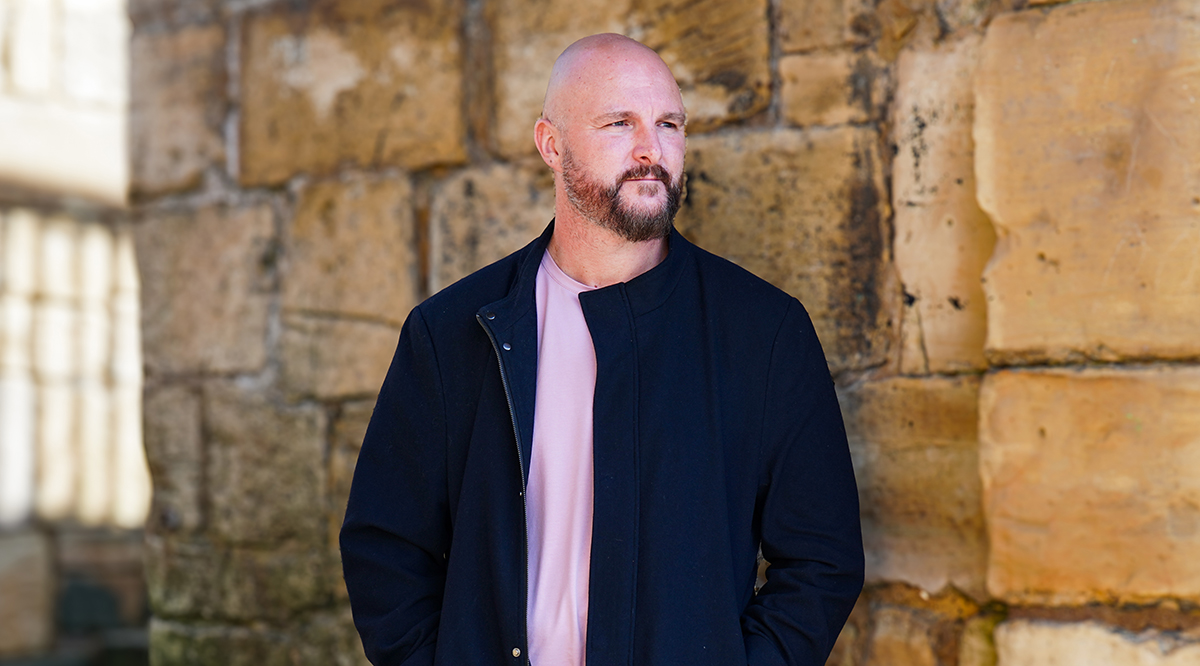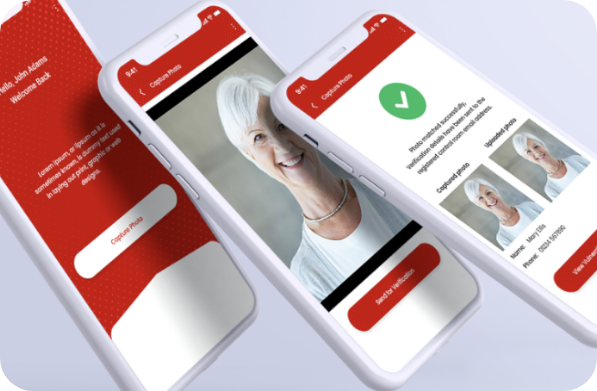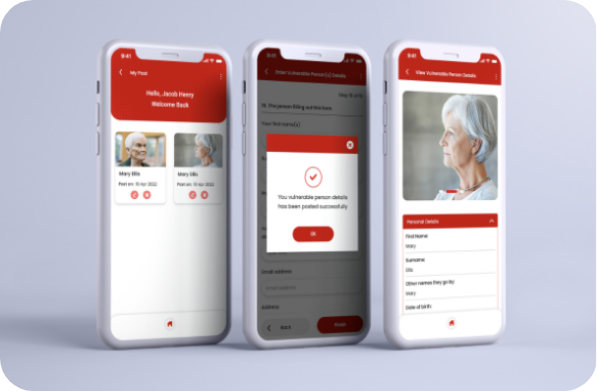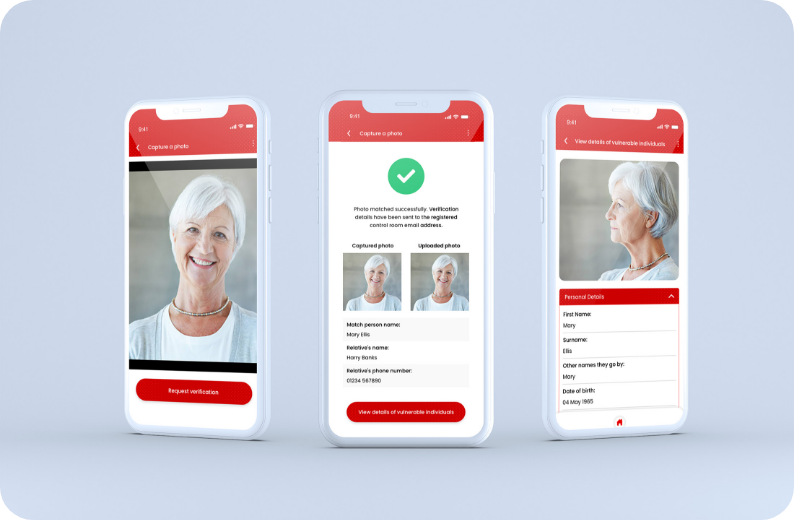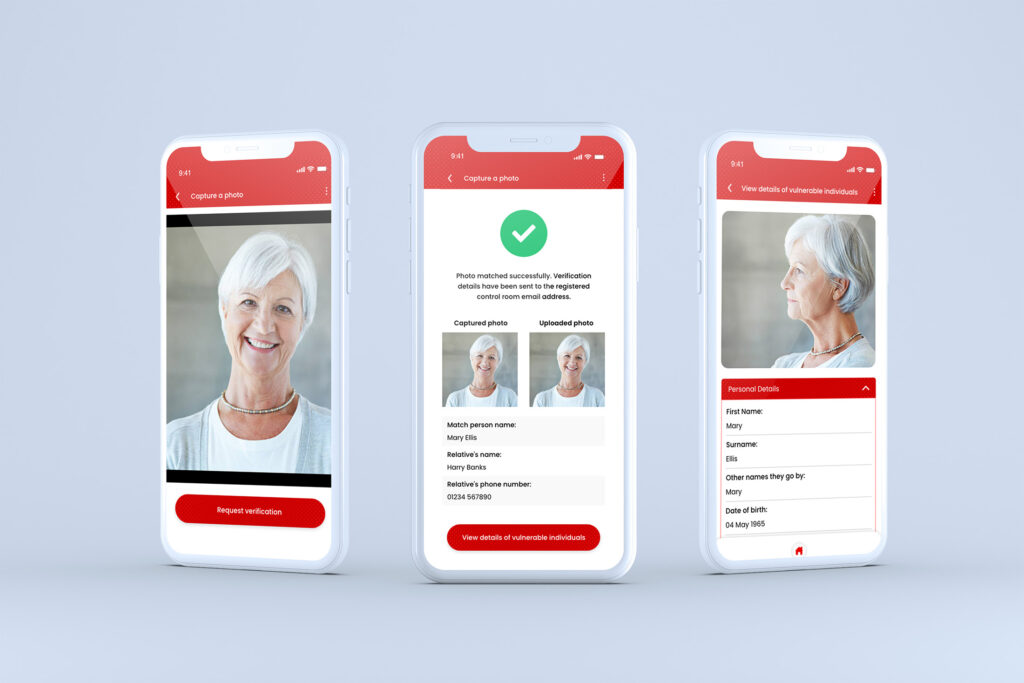Cross-platform Flutter app for rapid, privacy-safe identification On-device facial recognition to bring loved ones home faster
We set out to solve a clear challenge: help emergency services, event stewards, and members of the public rapidly identify vulnerable, potentially disoriented individuals and reunite them with loved ones. The result is a Flutter mobile app that combines on-device facial recognition with a secure, consent-based profile registry. It enables faster decisions at the point of contact, reduces distress for families and carers, and lays the groundwork for future capabilities such as wearable alerts, safe-zone geofencing, community notifications, and integrations with care providers.
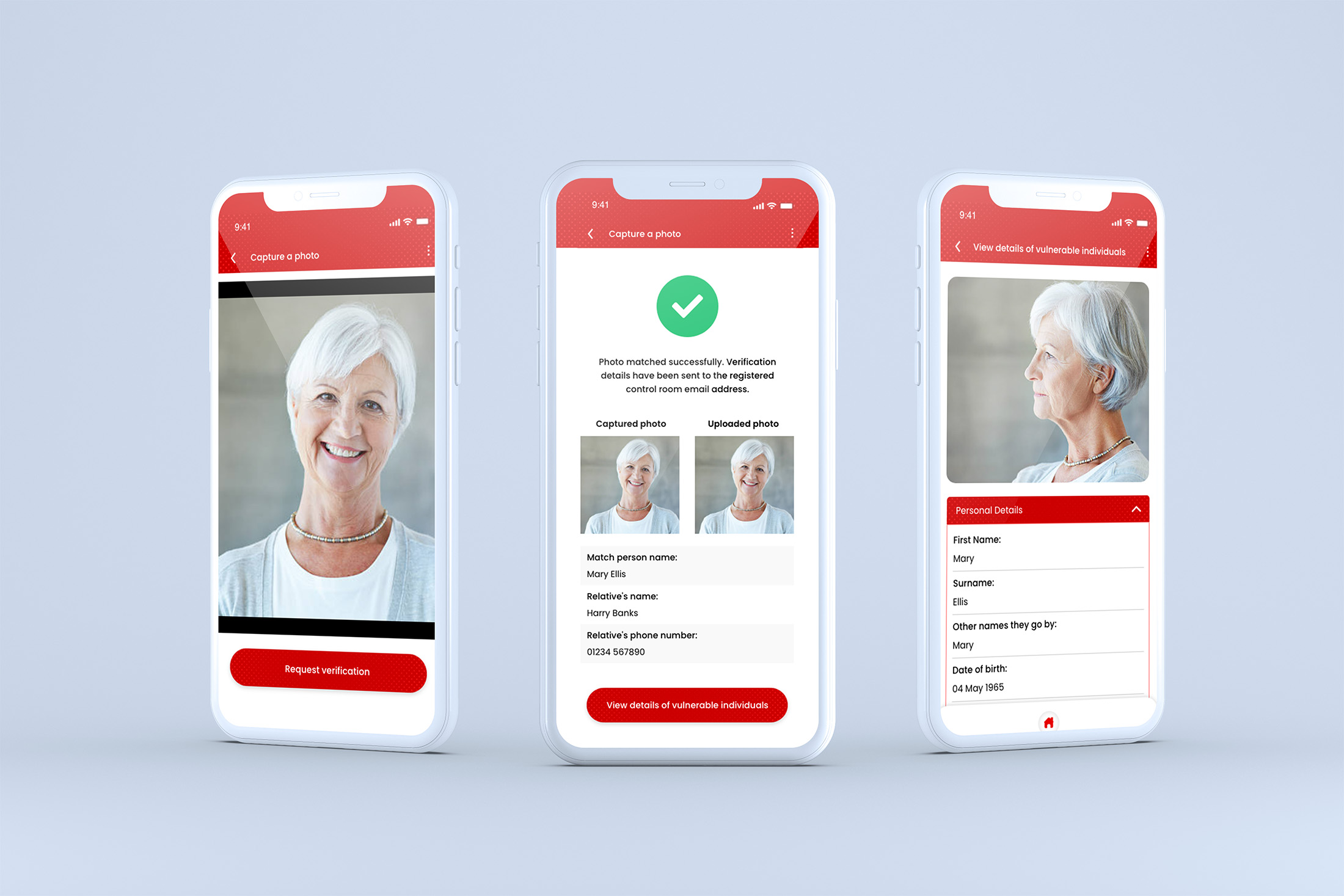

The Problems
We set out to solve a clear challenge: help emergency services, event stewards, and members of the public rapidly identify vulnerable, potentially disoriented individuals and reunite them with loved ones. The result is a Flutter mobile app that combines on-device facial recognition with a secure, consent-based profile registry. It enables faster decisions at the point of contact, reduces distress for families and carers, and lays the groundwork for future capabilities such as wearable alerts, safe-zone geofencing, community notifications, and integrations with care providers.
The Frustration
In the UK, more than 900,000 people are living with dementia. When someone becomes disoriented, responders often rely on verbal confirmation, paper IDs, or time-consuming database checks—none of which are reliable in the moment. Families, carers, and first responders need a method that is fast, accurate, and privacy-safe. Families felt anxious and powerless in the most critical minutes, while first responders faced fragmented information and uncertain next steps. Available technologies were often too slow, expensive, or unsuited to frontline realities like offline operation and poor lighting.
The Resolution and Ongoing Support
We focused on speed, accuracy, safety, and coverage. Identification needed to happen in seconds, using multiple reference photos to improve match confidence. The system had to operate with explicit consent, robust security, and clear audit trails, while making registration and ongoing maintenance straightforward for families, carers, and organisations. We delivered a cross-platform Flutter mobile app (iOS and Android) that uses on-device facial recognition to let authorised responders scan a face and, when a match is found, securely surface only the essential details needed to reunite the individual with their support network. Families and carers create consent-led profiles, emergency contacts, home address, GP/medical references, and multiple reference photos, stored in a secure registry with encryption in transit and at rest, data minimisation, activity logs, and role-based access for emergency services, event organisers, and the public. Built for low-connectivity environments, the app is fast and resilient; we provide ongoing maintenance, security monitoring, and iterative enhancements shaped by frontline feedback, with a roadmap that includes wearable integrations, safe-zone alerts, and community assistance.
Building this app is one of the most meaningful things I’ve worked on. Seeing a responder confirm someone’s identity in seconds, without compromising dignity or privacy, is exactly why we do what we do. The team built it the right way: on-device recognition, consent-first profiles, and constant iteration from frontline feedback. It’s fast, reliable, and already giving families real peace of mind.
Chris Carroll, Founder, The Resolved Group
